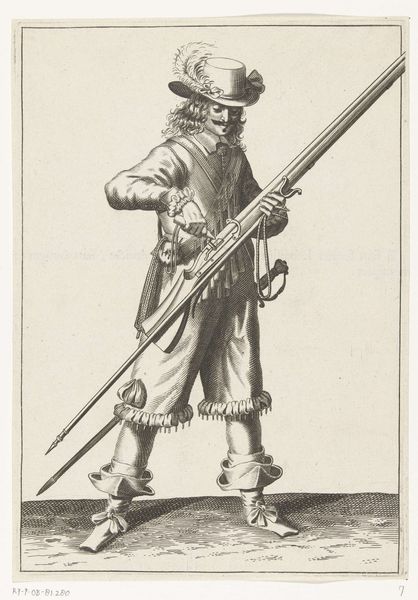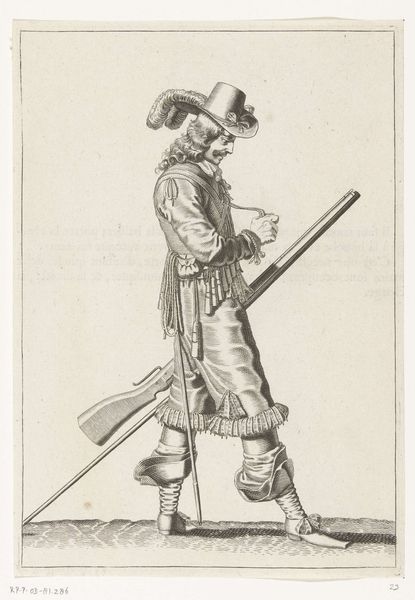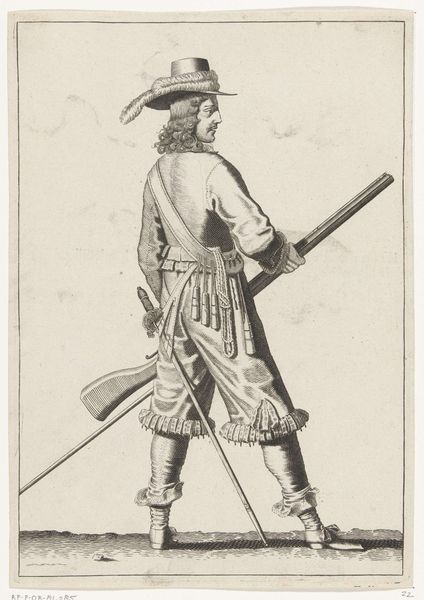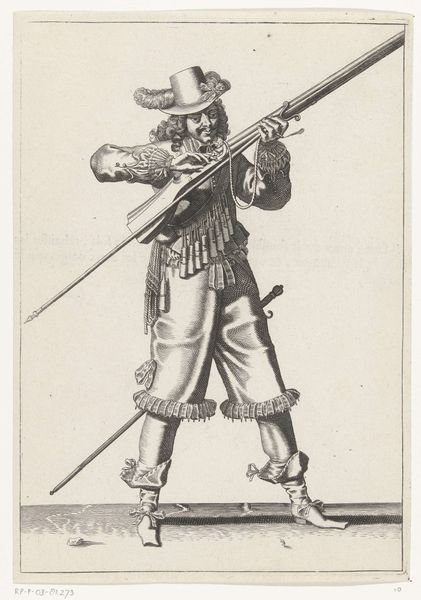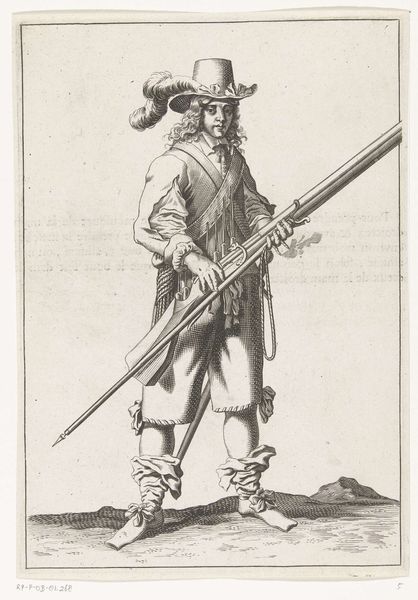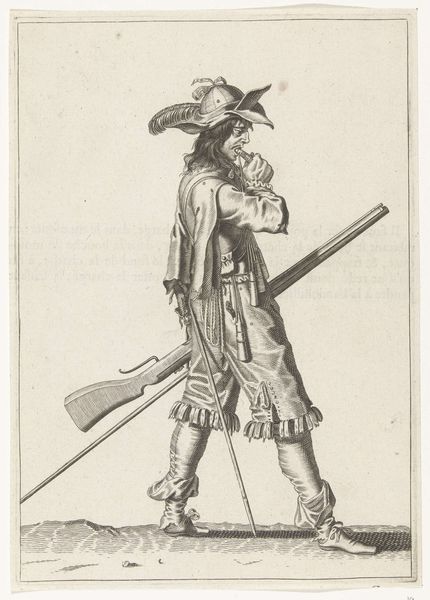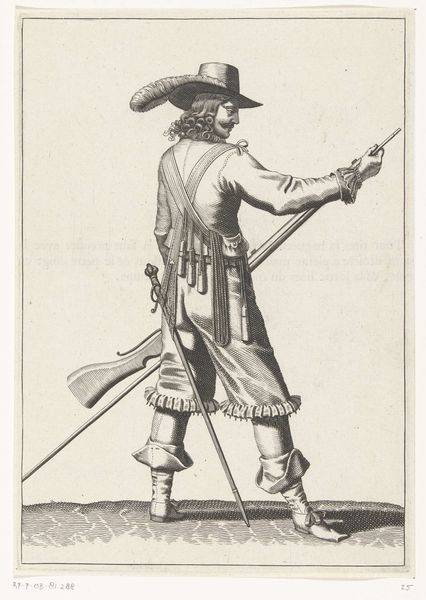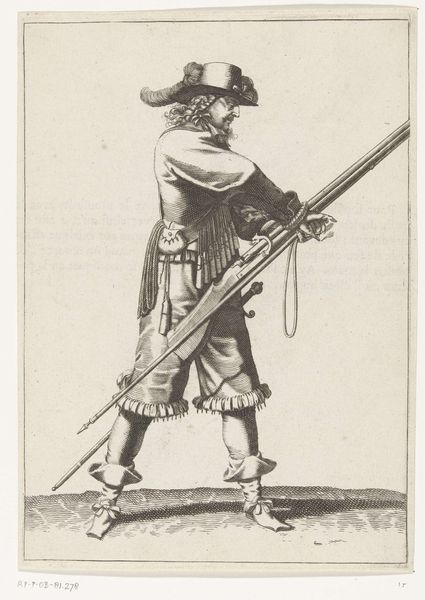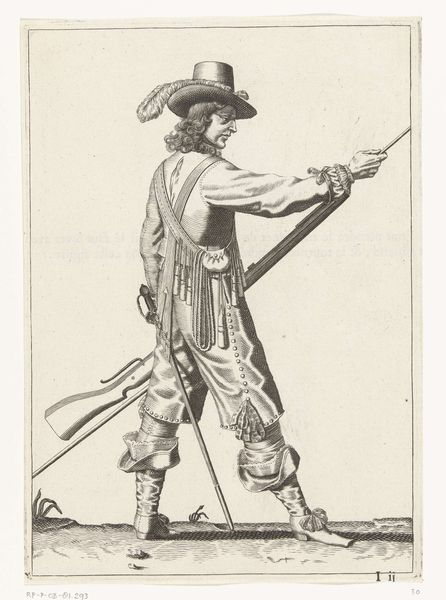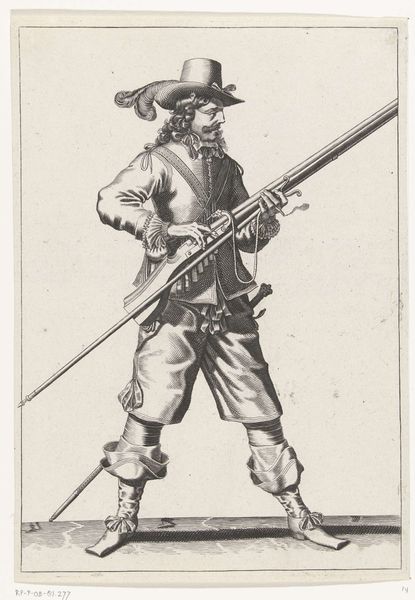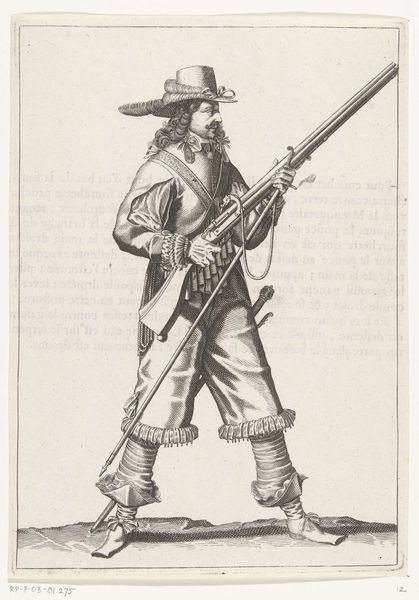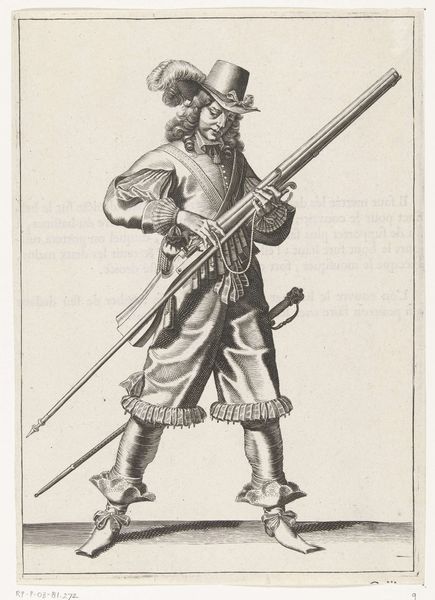
print, engraving
#
portrait
#
weapon
#
baroque
# print
#
caricature
#
figuration
#
line
#
history-painting
#
engraving
Dimensions: height 235 mm, width 165 mm
Copyright: Rijks Museum: Open Domain
Editor: So, this is "Soldaat die vonken wegblaast van de pan van zijn musket, ca. 1645," by Petrus Rucholle, an engraving dating back to the mid-17th century. There’s something almost humorous about his rather flamboyant outfit in contrast to the serious weapon he's holding. How do you read into this piece? Curator: It's fascinating how costume can play a pivotal role in how we perceive power, isn’t it? The image’s purpose might not have been purely artistic. Consider the historical context: prints like this circulated widely, shaping public perception. This particular figure embodies aspects of military identity, yet his appearance challenges a straightforward heroic narrative. Editor: So it's not necessarily just a portrait, but more of a commentary on military figures of the time? Curator: Precisely. Prints were powerful tools for disseminating information and constructing social identities. The flamboyant attire could be interpreted as a critique of the vanity or perhaps even the perceived ineffectiveness of certain military elites during that period. How might contemporary audiences have interpreted this juxtaposition of fashion and function? Editor: Interesting. So maybe the artist is subtly undermining the authority that the soldier is supposed to represent. Were prints like this used for political satire often? Curator: Frequently. And consider the role of the printing press in democratizing imagery. Before mass production, representations of power were largely controlled by the elite. Prints allowed for broader dissemination of diverse perspectives, including critical ones. Did this image support or challenge existing power structures? Editor: I hadn't thought about the medium itself as a form of commentary. That puts a whole new spin on it for me. It makes you wonder how images are functioning like that today. Curator: Indeed. Examining this work encourages us to consider how art actively participates in the shaping of socio-political landscapes. Editor: This has totally changed my perspective. I now see how something as simple as an engraving of a soldier can offer deep insights into the cultural and political dynamics of its time.
Comments
No comments
Be the first to comment and join the conversation on the ultimate creative platform.
